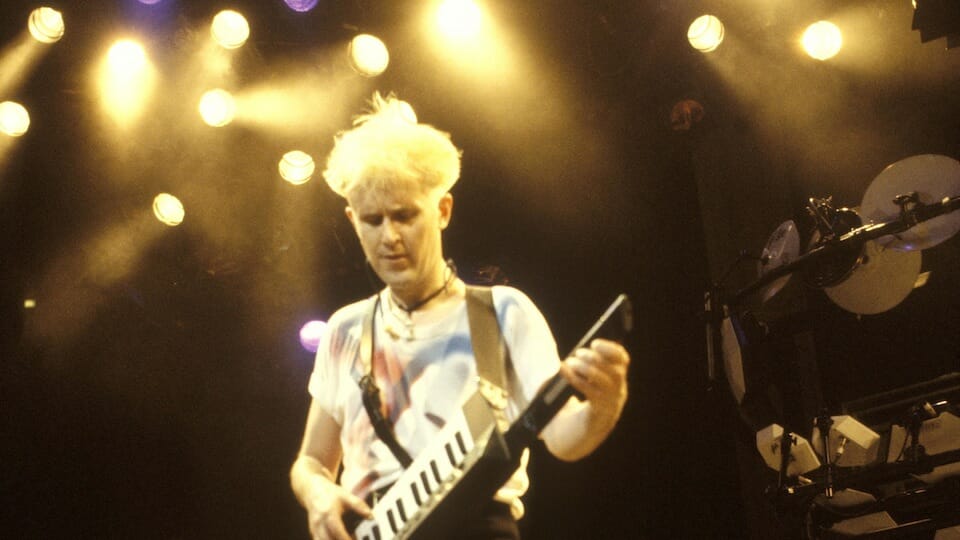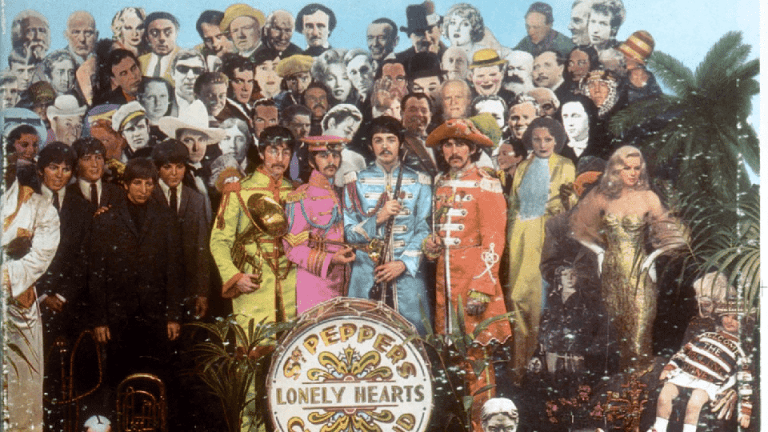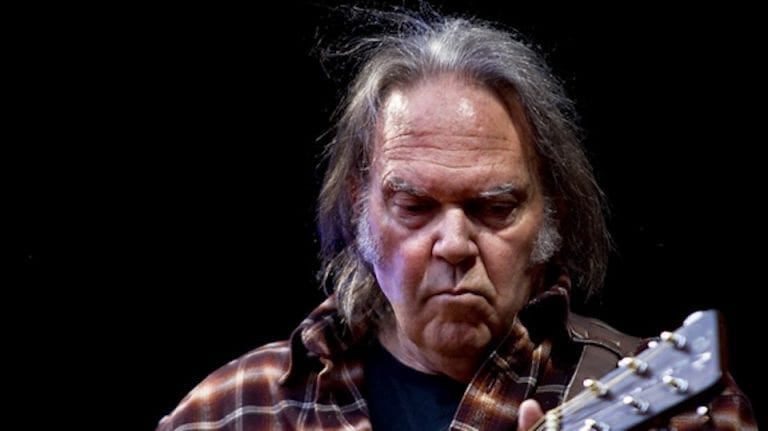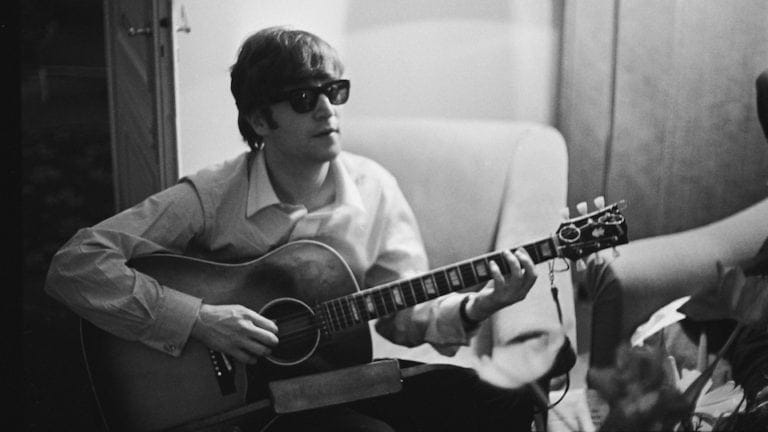Follow us
The Synthesizer: Perfect Instrument for The 80s

There was a time in the early 80s when a good synthesizer and a weird haircut could make you a potential star on the fledgeling MTV. The synthesizer put endless sounds and effects at your fingertips: strings, drums, bass, keys, horns. You could literally become a one-man band – especially if you got one of those sweet portable ones with a strap that let you prowl the stage. Or, at least, your mom’s basement.
Of course, synths were nothing new. You heard them on “Here Comes The Sun” by the Beatles and “Living For The City” by Stevie Wonder, for starters. But synthesizer-based music seemed to really dominate in the 80s.
As an anodyne electronic instrument, it was perfectly suited for capturing a certain “coolness” in an era defined by Reagan, acquisition (#yuppies), and mindless, shiny style. Jan Hammer made his name by composing the theme to the 80s TV hit, Miami Vice — which launched a million dudes wearing Armani suits with loafers but no socks.
From Devo to Human League, Gary Numan to Prince, synthesizer-based tracks defined the 80s, and as such, we got dozens of memorable songs from that decade. Here are a few worth recalling.
ALPHAVILLE: Forever Young
The German trio recorded this ode to youth and aging (not to be confused with the Dylan track of the same name) not once, not twice, but three different times. There are various other dance mixes and it even appears in the 2004 movie Napoleon Dynamite. While it didn’t do much on the charts (although a bit better in Europe than the US), the synth riffs (a mix of joy and melancholy) are instantly recognizable.
PETER GABRIEL: Shock the Monkey
This was Gabriel’s first Top 40 hit in the US. He took the relentless synthesizer hooks and “warmed” them up a bit with a dance rhythm and repetitive vocal that you couldn’t forget. And, as he would do so often in years to come, the video was…well, all Gabriel.
PETE SHELLEY: Homosapien
Shelley wrote this in 1974 a few years before he formed the Buzzcocks. He saved it for his first solo album in ’81, adding pulsing, beeping synthesizers that conveyed the driving urgency of his message about seeing beyond labels. Despite being banned by the BBC for its supposed reference to gay sex (not what Shelley intended), the song’s hypnotic beat made it a favorite among renegade New Wave deejays.
THOMAS DOLBY: Europa
Dolby was sort of the godfather of 80s synth, introducing himself to the MTV audience by way of the goofy video for “She Blinded Me With Science.” “Europa and The Pirate Twins” was inspired by World War II and how the era overwhelmed relationships at the time; Andy Partridge of XTC shows up on harmonica. In 1982, the song reached #37 on the Billboard rock chart.
HOWARD JONES: What Is Love
Howard Jones was such a talented pianist that he once gave kids in the neighborhood private lessons – while he was still a kid. Even on synth, his ear for melody can be heard on hits like “No One Is To Blame” and “Things Can Only Get Better.” “What Is Love” was Jones’ second single, released in 1983. He’s stated that he didn’t want to write the typical love song – and his use of the synthesizer creates a moodier, darker vibe around the perennial song topic.
What are some of your favorite 80s synth tracks? Spill ’em in the comments!
-Cindy Grogan
Photo: Howard Jones (Getty)

















Wonderful stuff, a very insightful history!….
Honorable Mention: Flock of Seagulls (Space Age Love Song)
Thanks, Steve. Yes, the list could’ve gone on…and on…and on. But we’d be here til next Tuesday.
Yes, the Flock of Seagulls two finger synth song. The synth was so mighty it could be hold together a song with minimal effort!
You barely heard the synthesizer on “Here Comes the Sun”.(It was also used on the Doors’ Strange Days about three years before that!) But, the synth was REALLY heard and featured on “Lucky Man” by Emerson, Lake and Palmer. Bob Moog himself said that solo, improvised on the spot, was what put Moogs on the map. THAT was its real breakthrough performance. It was featured in hit records by Yes, Edgar Winter (Frankenstein) and, the real predecessor of the 1980’s, Autobahn by Kraftwerk. Peter Gabriel had been using synths since he 1973 in Genesis.
This doesn’t negate what the Beatles did with synths-McCartney had Linda play one as early as Band on the Run-but it manages , perhaps unintentionally, to slight the early use of synths by Progressive Rock, and the other attraction of synths, that of ease of play. Certain folks like Thomas Dolby, were skilled technicians, but it didn’t take a lot of work to come up with somewhat interesting patches.
Also, they added a futuristic sheen to everything. The evolution of synthesizer use is pretty involved, and there were several steps as to how it became the featured instrument of the 1980s. As a matter of fact, they were the foundation, for better or worse, of the current ease of access that composers now have to thousands of sounds and will be considered, moreso than the electric guitar, the breakthrough instrument of the 20th century.
It deserves more than this puff piece
Thanks for your comments. Yes, synths had been around before (as mentioned) — the piece is a focus on one particular era in which they dominated pop music.
Gary Numan’s “Cars” is my all time favorite synth song. He conveyed so much depth of emotion with his playing.
A couple of my favorite synth heavy songs…Herbie Hancock’s Rockit and Harold Faltermeyer’s Axel F. I’m going on a long road trip tomorrow…I think it’s time for an 80’s music marathon (again)!
I’d just note for the record that there was a major technological difference between synths in the seventies versus synths in the eighties: polyphony, the ability to play more than one key at a time. The first commercially successful polyphonic synthesizer was the Sequential Circuits’ Prophet 5 (c. 1978). Prior to this, analog synths like the ARP 2600 or the Minimoog could only play chords if they were recorded on multiple tracks. For an excellent example of this, check out Stevie Wonder’s You and I: https://www.youtube.com/watch?v=KRrrFNVUXDQ